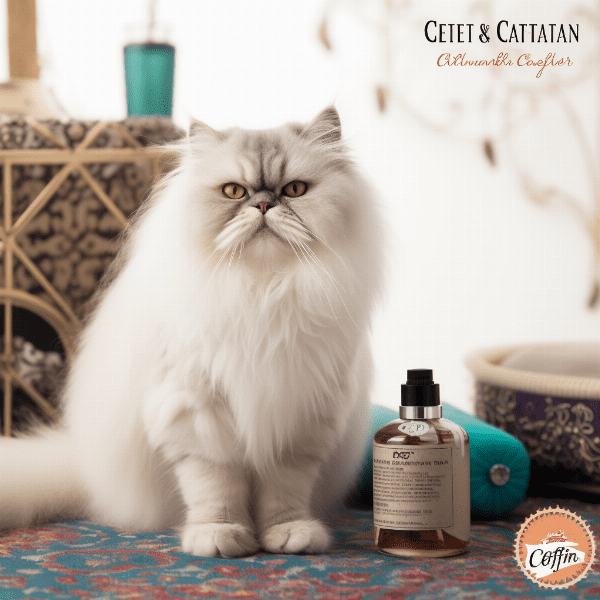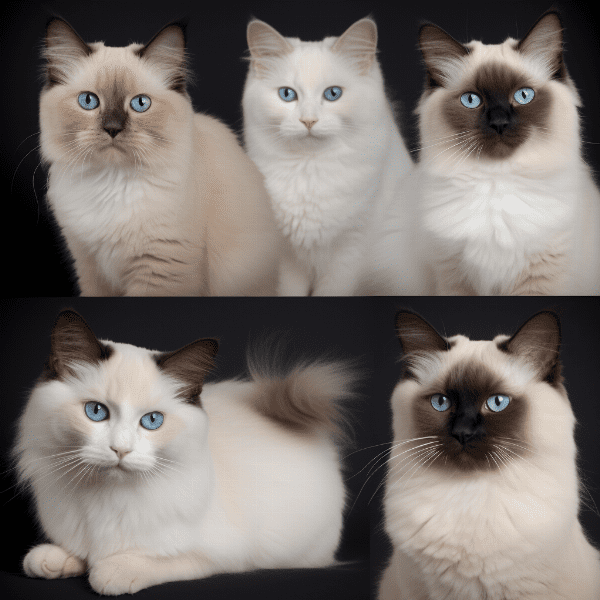Table of Contents
- Introduction to Cat Shaving
- Why Do People Shave Their Cats?
- Understanding Different Cat Coats
- Popular Cat Shaving Styles: Lion Cut, Teddy Bear Cut, and more
- Pros and Cons of Shaving Your Cat
- How to Prepare Your Cat for Shaving
- DIY Cat Shaving vs. Professional Grooming: Which is Better?
- Caring for Your Cat’s Coat After Shaving
- Final Thoughts on Popular Cat Shaving Styles.
Introduction to Cat Shaving
Cats are fascinating creatures with their soft and furry coats that make them look even more adorable. However, as much as we love to cuddle with our feline friends, their fur can become problematic if not taken care of properly. Sometimes, cats can develop matted fur or a thick undercoat, which can be uncomfortable for them and make it difficult for them to groom themselves. This is where Cat shaving comes into play.
What is Cat Shaving?
Cat shaving is the process of trimming or completely removing your cat’s fur to improve their hygiene and overall health. Shaving your cat can also be a styling choice to give them a unique appearance, especially during the summer months when their fur can become too thick for their comfort.
History of Cat Shaving
The practice of cat shaving has been around for centuries. In ancient Egypt, it was common to shave cats as a sign of mourning when a beloved pet or person passed away. In modern times, cat shaving has become a more common practice for both aesthetic and health reasons.
Different Reasons for Cat Shaving
There are several reasons why a cat might need to be shaved. For example, if your cat has long hair or a thick undercoat, they may develop painful matting or tangles that can be difficult to remove. Shaving can help prevent this issue and also reduce shedding, which can be beneficial for those with allergies. Additionally, older cats or cats with medical conditions may require shaving to help them maintain their hygiene.
The Importance of Cat Grooming
Proper grooming is an essential part of a cat’s overall health and wellbeing. Grooming helps remove dirt, debris, and dead skin cells from the cat’s fur, which can help prevent infections and keep their coat healthy and shiny. Grooming also allows you to check for any abnormalities on your cat’s skin, such as bumps, cuts, or parasites.

Why Do People Shave Their Cats?
Cat shaving has become a common practice among pet owners for various reasons. In this section, we’ll explore some of the reasons why people choose to shave their cats and the benefits that come with it.
Health Reasons
One of the primary reasons why people shave their cats is for health reasons. Cats with thick coats or long hair can develop matting and tangles that can be painful and uncomfortable. Matting can also lead to skin irritation and infections. Shaving your cat can help prevent these issues, and it can also help with hygiene if your cat has difficulty grooming themselves.
Shaving can also be beneficial for cats with medical conditions that affect their fur. Cats with allergies, for example, may benefit from a shaved coat as it can reduce allergens that get trapped in their fur.
Aesthetic Reasons
Another reason why people choose to shave their cats is for aesthetic reasons. Cat owners may want to give their pets a unique and stylish appearance, and shaving can achieve this. Popular Cat shaving styles include the lion cut, which gives the cat a mane-like appearance, and the teddy bear cut, which leaves the cat with a fluffy face and paws.
Climate
Climate is another factor that may influence a pet owner’s decision to shave their cat. Cats with thick coats may become uncomfortable during hot weather, and shaving can help keep them cool. However, it’s important to note that not all cats should be shaved, as some breeds are better suited to colder climates and may be more susceptible to sunburn or other skin irritations if their fur is removed.
Conclusion
In conclusion, people shave their cats for various reasons, including health, aesthetic, and climate reasons. However, it’s important to remember that not all cats need to be shaved, and it’s essential to consult with a professional groomer or veterinarian before attempting to shave your cat yourself. In the following sections, we will explore popular cat shaving styles, the pros and cons of cat shaving, and other important factors to consider before deciding to shave your cat.

Understanding Different Cat Coats
Before you decide to shave your cat, it’s important to understand their coat type. Not all cats have the same type of coat, and some breeds require specific grooming techniques. In this section, we’ll explore the different types of cat coats and what to consider when it comes to shaving.
Short-Haired Cats
Short-haired cats, as the name suggests, have a coat that’s relatively short and lies close to the skin. Breeds like the Siamese and the American Shorthair are examples of cats with short hair. These cats typically don’t require regular grooming, but they may benefit from occasional brushing to remove loose fur and prevent matting.
Shaving short-haired cats isn’t typically necessary, but some owners may choose to shave their cats during hot weather to keep them cool.
Long-Haired Cats
Long-haired cats, such as the Persian and the Maine Coon, have a coat that’s longer and thicker than short-haired cats. These cats require more frequent grooming to prevent matting and tangles. Regular brushing is essential to keep their fur healthy and shiny.
Shaving long-haired cats can be beneficial if they develop severe matting or if they have trouble grooming themselves. However, it’s important to consult with a professional groomer or veterinarian before shaving as some long-haired cats require specific grooming techniques.
Double-Coated Cats
Double-coated cats, such as the Siberian and the Norwegian Forest Cat, have two layers of fur: a soft undercoat and a longer, coarser topcoat. These cats require regular grooming to remove the undercoat and prevent matting.
Shaving double-coated cats isn’t typically necessary, but it can be done to reduce shedding during certain times of the year. However, it’s important to approach shaving with caution, as removing the undercoat can interfere with a cat’s natural temperature regulation.
Conclusion
In conclusion, understanding your cat’s coat type is essential when it comes to grooming and shaving. Different coat types require different grooming techniques, and some cats may not need to be shaved at all. Before deciding to shave your cat, it’s important to consult with a professional groomer or veterinarian to determine if shaving is necessary and what approach is best for your cat’s specific needs. In the following sections, we will explore popular cat shaving styles, the pros and cons of cat shaving, and other important factors to consider before deciding to shave your cat.
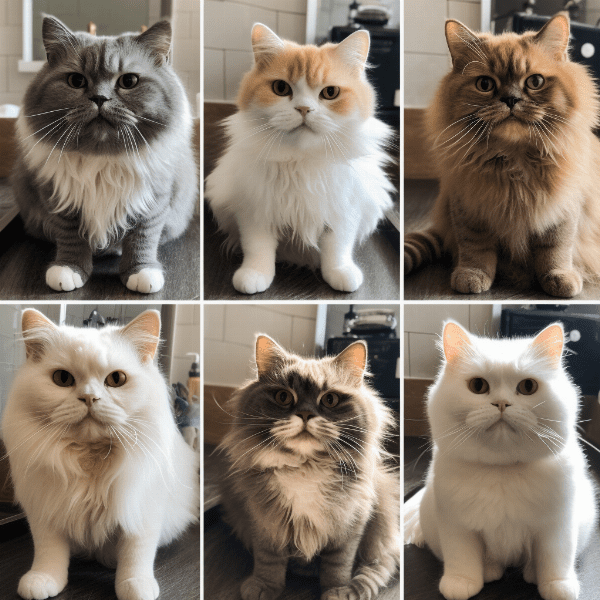
Popular Cat Shaving Styles: Lion Cut, Teddy Bear Cut, and more
If you’ve decided to shave your cat, you may be wondering what styles are available. Shaving can be a chance to give your feline friend a unique and stylish appearance. In this section, we’ll explore some of the most popular cat shaving styles.
Lion Cut
The lion cut is a popular cat shaving style that gives the cat a lion-like appearance. This style involves shaving the cat’s body and legs, leaving a “mane” of fur around their neck and head. The tail is usually left fluffy, and the paws are shaved but left with tufts of fur at the end.
The lion cut is ideal for cats with long hair or thick coats that are prone to matting. This style can also be beneficial during hot weather, as it allows the cat to stay cool while still having some fur for protection.
Teddy Bear Cut
The teddy bear cut is another popular cat shaving style that leaves the cat with a fluffy face and paws. This style involves shaving the cat’s body and legs but leaving the fur on their face and paws longer. The tail can also be left fluffy.
The teddy bear cut is ideal for cats with short hair or fine coats that don’t require a lot of grooming. This style can give your cat a cute and cuddly appearance.
Full Shave
A full shave is when the cat’s entire body is shaved, leaving no fur. This style can be beneficial for cats with severe matting or long hair that’s difficult to manage. However, a full shave should only be done under the guidance of a professional groomer or veterinarian, as removing all of a cat’s fur can interfere with their natural temperature regulation and put them at risk for sunburn and other skin irritations.
Conclusion
In conclusion, there are several popular cat shaving styles, each with its own unique appearance and benefits. The lion cut and the teddy bear cut are two of the most popular styles, but a full shave may be necessary for cats with severe matting or other issues. Before deciding on a style, it’s important to consult with a professional groomer or veterinarian to determine the best approach for your cat’s specific needs. In the following sections, we will explore the pros and cons of cat shaving, how to prepare your cat for shaving, and other important factors to consider before deciding to shave your cat.
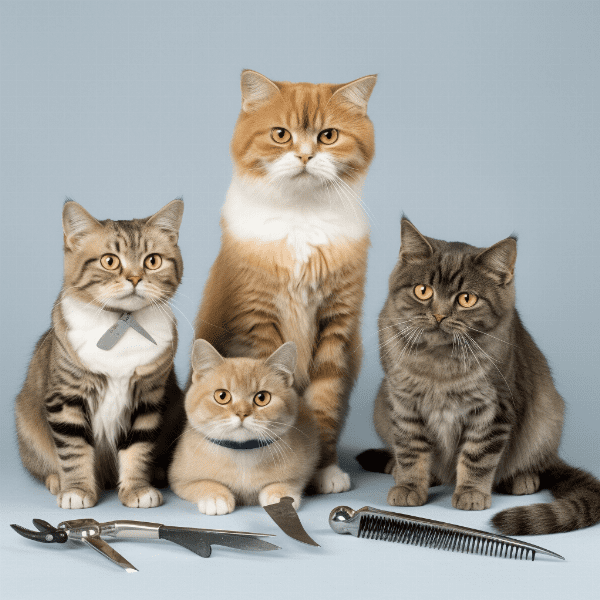
Pros and Cons of Shaving Your Cat
Shaving your cat can have several benefits, but it’s important to weigh the pros and cons before making a decision. In this section, we’ll explore some of the advantages and disadvantages of cat shaving.
- Prevents matting: Shaving can prevent matting and tangles, which can be painful and uncomfortable for your cat.
- Reduces shedding: Shaving can reduce shedding, which can be beneficial for those with allergies.
- Improves hygiene: Shaving can improve your cat’s hygiene, especially if they have difficulty grooming themselves.
- Stylish appearance: Shaving can give your cat a unique and stylish appearance.
- Helps with medical conditions: Shaving can be beneficial for cats with medical conditions that affect their fur, such as allergies or skin irritations.
- Risk of sunburn and skin irritations: Shaving can leave your cat’s skin exposed to the sun, which can put them at risk for sunburn and other skin irritations.
- Temperature regulation: Shaving can interfere with your cat’s natural temperature regulation, which can be especially problematic for cats that live in colder climates.
- Stressful for cats: Shaving can be stressful for cats, especially if they’re not used to being handled or groomed.
- Risk of injury: Shaving can be dangerous if not done correctly. Accidents can happen, such as cuts or nicks, which can be painful and potentially lead to infections.
Conclusion
In conclusion, there are both pros and cons to shaving your cat. It’s important to weigh these factors carefully before making a decision. Shaving can be beneficial for preventing matting, reducing shedding, and improving hygiene. However, it’s important to consider the potential risks, such as sunburn, temperature regulation, and stress. Before deciding to shave your cat, it’s important to consult with a professional groomer or veterinarian to determine the best approach for your cat’s specific needs. In the following sections, we will explore how to prepare your cat for shaving, DIY cat shaving vs. professional grooming, frequently asked questions about cat shaving, and other important factors to consider before deciding to shave your cat.
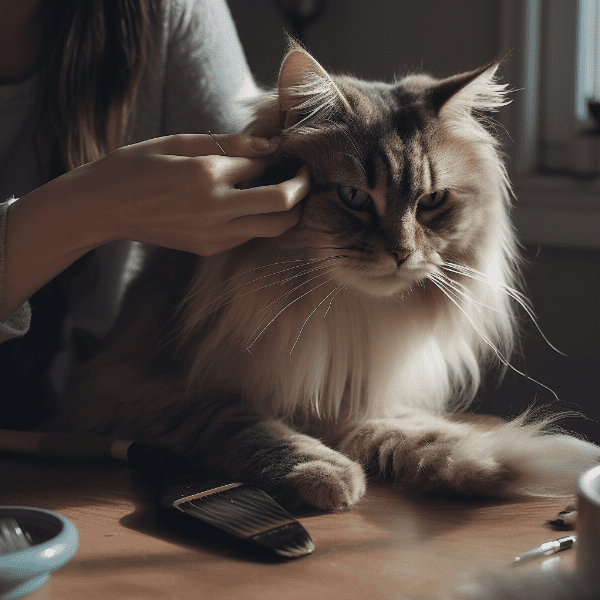
How to Prepare Your Cat for Shaving
Preparing your cat for shaving is essential to ensure a safe and stress-free experience. In this section, we’ll explore some tips on how to prepare your cat for shaving.
Brush Your Cat’s Coat
Before shaving your cat, it’s important to brush their coat to remove any tangles or mats. This will make the shaving process easier and less stressful for your cat. Use a comb or brush specifically designed for cats, and start at the head and work your way down the body. Be gentle and avoid pulling on any tangles or mats.
Trim Your Cat’s Nails
Trimming your cat’s nails before shaving can help prevent scratches or other injuries. Use a pair of cat nail clippers and trim the tips of the nails, being careful not to cut too close to the quick (the pink part of the nail). If your cat is not used to having their nails trimmed, it may be helpful to start practicing a few weeks before the shaving appointment.
Bathe Your Cat
Giving your cat a bath before shaving can help remove any dirt or debris from their coat and make the shaving process smoother. Use a cat-specific shampoo and warm water, and be sure to rinse thoroughly.
Conclusion
In conclusion, preparing your cat for shaving is essential to ensure a safe and stress-free experience. Brushing your cat’s coat, trimming their nails, and giving them a bath are important steps to take before the appointment. It’s also important to have the shaving done by a professional groomer who has the expertise and tools necessary to ensure a safe experience for your cat. In the following sections, we will explore DIY cat shaving vs. professional grooming, frequently asked questions about cat shaving, and other important factors to consider before deciding to shave your cat.
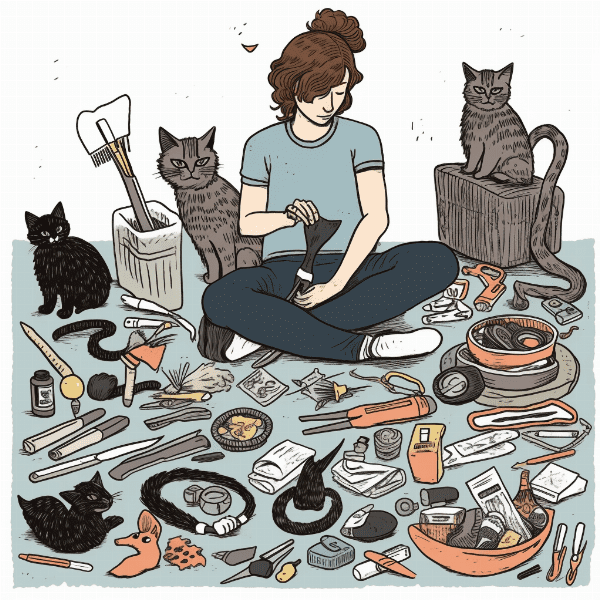
DIY Cat Shaving vs. Professional Grooming: Which is Better?
When it comes to shaving your cat, you may be wondering whether to do it yourself or take your cat to a professional groomer. In this section, we’ll explore the pros and cons of DIY cat shaving vs. professional grooming.
DIY Cat Shaving
One advantage of DIY cat shaving is that it can be more cost-effective than taking your cat to a professional groomer. You also have more control over the process and can take breaks if your cat becomes stressed or uncomfortable. However, DIY cat shaving can be risky if not done correctly. You may accidentally injure your cat or leave them with an uneven or unappealing appearance.
Professional Grooming
Taking your cat to a professional groomer for shaving has several advantages. Groomers have the expertise and tools necessary to ensure a safe and stress-free experience for your cat. They can also provide advice on the best shaving styles for your cat’s coat type and appearance. However, professional grooming can be more expensive than DIY cat shaving.
Conclusion
In conclusion, whether to do DIY cat shaving or take your cat to a professional groomer depends on several factors, including your budget, comfort level, and your cat’s specific needs. While DIY cat shaving can be cost-effective, it can also be risky if not done correctly. Professional grooming provides a safe and stress-free experience for your cat but can be more expensive. Before making a decision, it’s important to weigh the pros and cons and consider your cat’s specific needs. In the following sections, we will explore frequently asked questions about cat shaving, and other important factors to consider before deciding to shave your cat.
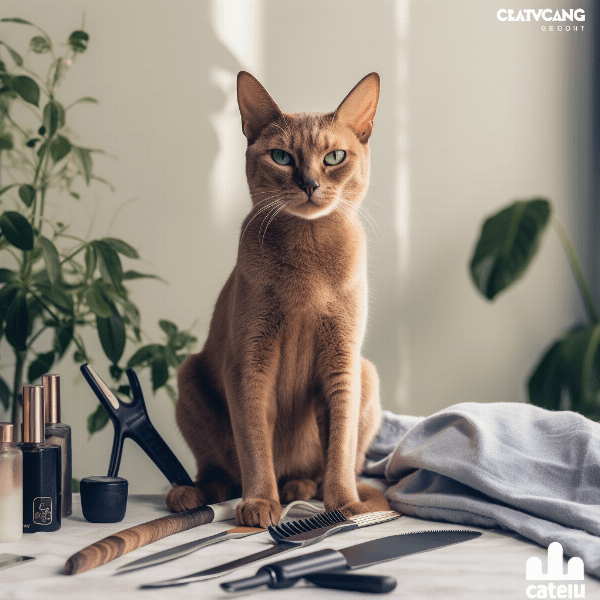
Caring for Your Cat’s Coat After Shaving
After your cat has been shaved, it’s important to take proper care of their coat to ensure their continued health and comfort. In this section, we’ll explore some tips for caring for your cat’s coat after shaving.
Keep Your Cat Indoors
After shaving, your cat’s skin may be more sensitive to the sun and other environmental factors. It’s important to keep your cat indoors, especially during peak sun hours, to prevent sunburn and other skin irritations.
Provide Adequate Shelter and Bedding
During colder months, your cat may need extra protection to keep warm after being shaved. Provide your cat with adequate shelter and bedding, such as a warm bed or heated blanket. This will help keep them comfortable and prevent them from getting sick.
Continue Regular Grooming
Just because your cat has been shaved doesn’t mean they don’t require regular grooming. Continue to brush their coat to prevent matting and tangles. This will also help distribute their natural oils and keep their coat shiny and healthy.
Avoid Over-Bathing
While it’s important to keep your cat clean after shaving, avoid over-bathing them as this can dry out their skin and coat. Use a gentle, cat-specific shampoo and only bathe them as needed.
Conclusion
In conclusion, caring for your cat’s coat after shaving is essential to ensure their continued health and comfort. Keep them indoors, provide adequate shelter and bedding, continue regular grooming, and avoid over-bathing. If you have any concerns about your cat’s coat or behavior after shaving, consult with a professional groomer or veterinarian. In the following section, we will address frequently asked questions about cat shaving to help you make an informed decision for your feline friend.
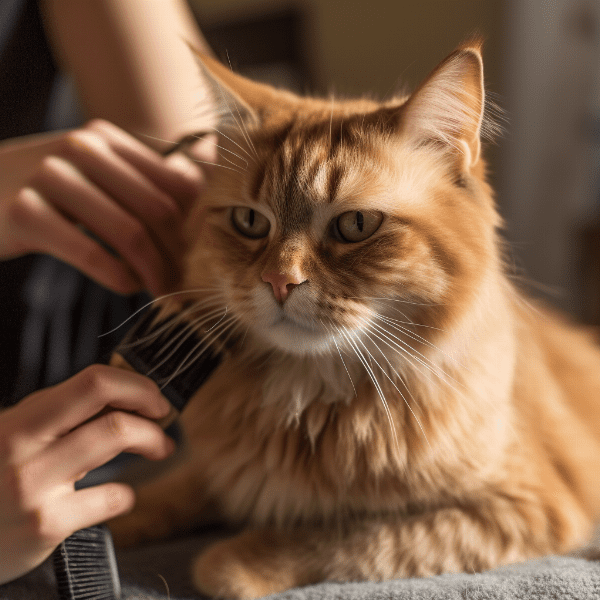
Final Thoughts on Popular Cat Shaving Styles.
Cat shaving can be a beneficial grooming option for many cat owners, but it’s important to consider the pros and cons before making a decision. In this section, we’ll summarize some key points to keep in mind when considering popular cat shaving styles.
Consider Your Cat’s Coat Type
When choosing a cat shaving style, it’s important to consider your cat’s specific coat type. Long-haired cats may benefit from a lion cut or teddy bear cut, while short-haired cats may only require a full shave.
Consult with a Professional Groomer
Shaving your cat can be a delicate process, and it’s important to have it done by a professional groomer. They have the expertise and tools necessary to ensure a safe and stress-free experience for your cat. Be sure to consult with a groomer before making a decision.
Consider the Pros and Cons
There are both pros and cons to cat shaving, and it’s important to weigh these factors carefully before making a decision. Shaving can prevent matting and tangles, reduce shedding, and improve hygiene, but it can also interfere with your cat’s natural temperature regulation and put them at risk for sunburn and other skin irritations.
Care for Your Cat’s Coat After Shaving
After your cat has been shaved, it’s important to take proper care of their coat to ensure their continued health and comfort. Keep them indoors during peak sun hours, provide adequate shelter and bedding, and continue regular grooming.
Conclusion
In conclusion, cat shaving can be a beneficial grooming option for many cat owners. By considering your cat’s specific coat type, consulting with a professional groomer, and weighing the pros and cons, you can make an informed decision for your feline friend. After shaving, be sure to take proper care of your cat’s coat to ensure their continued health and comfort.


